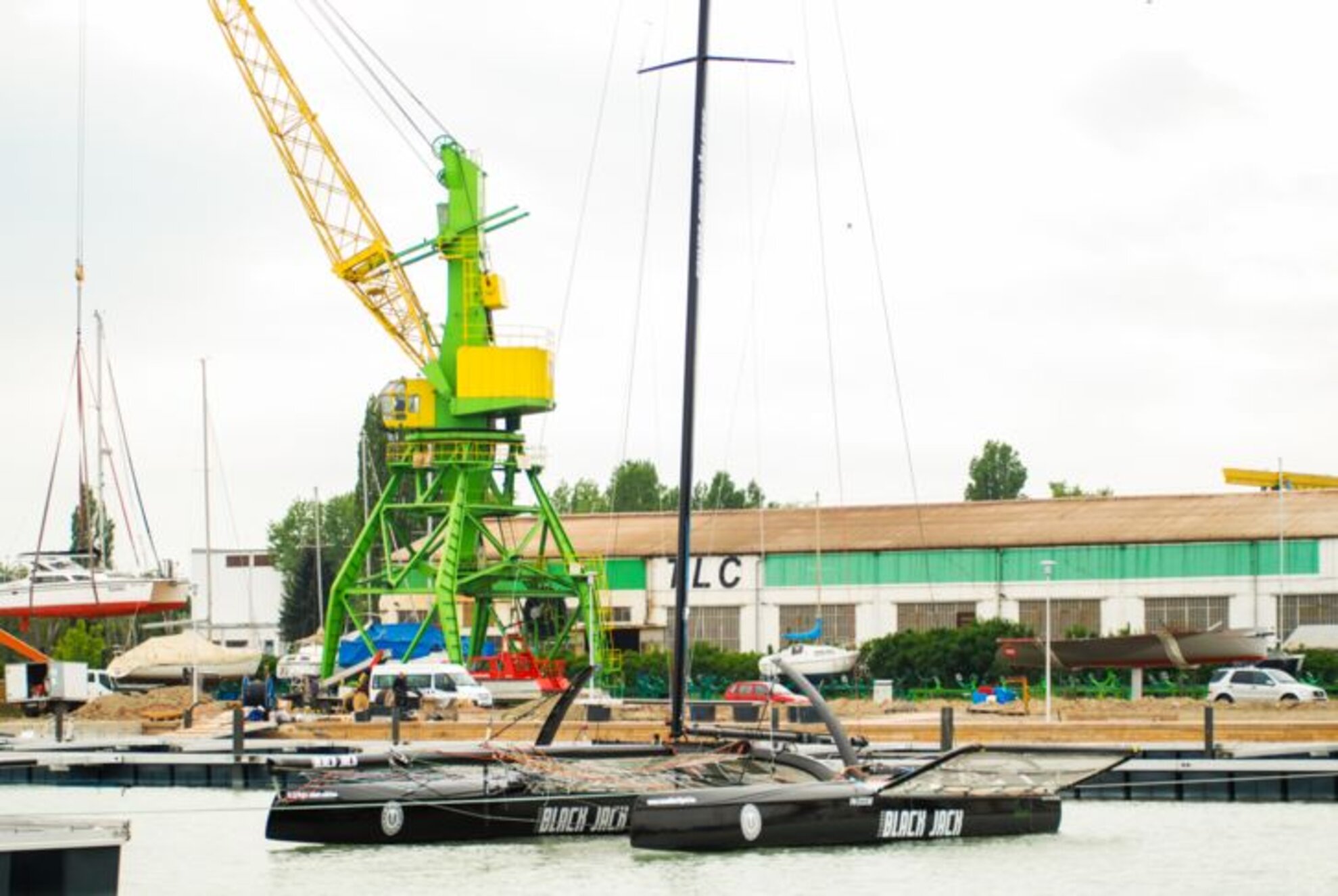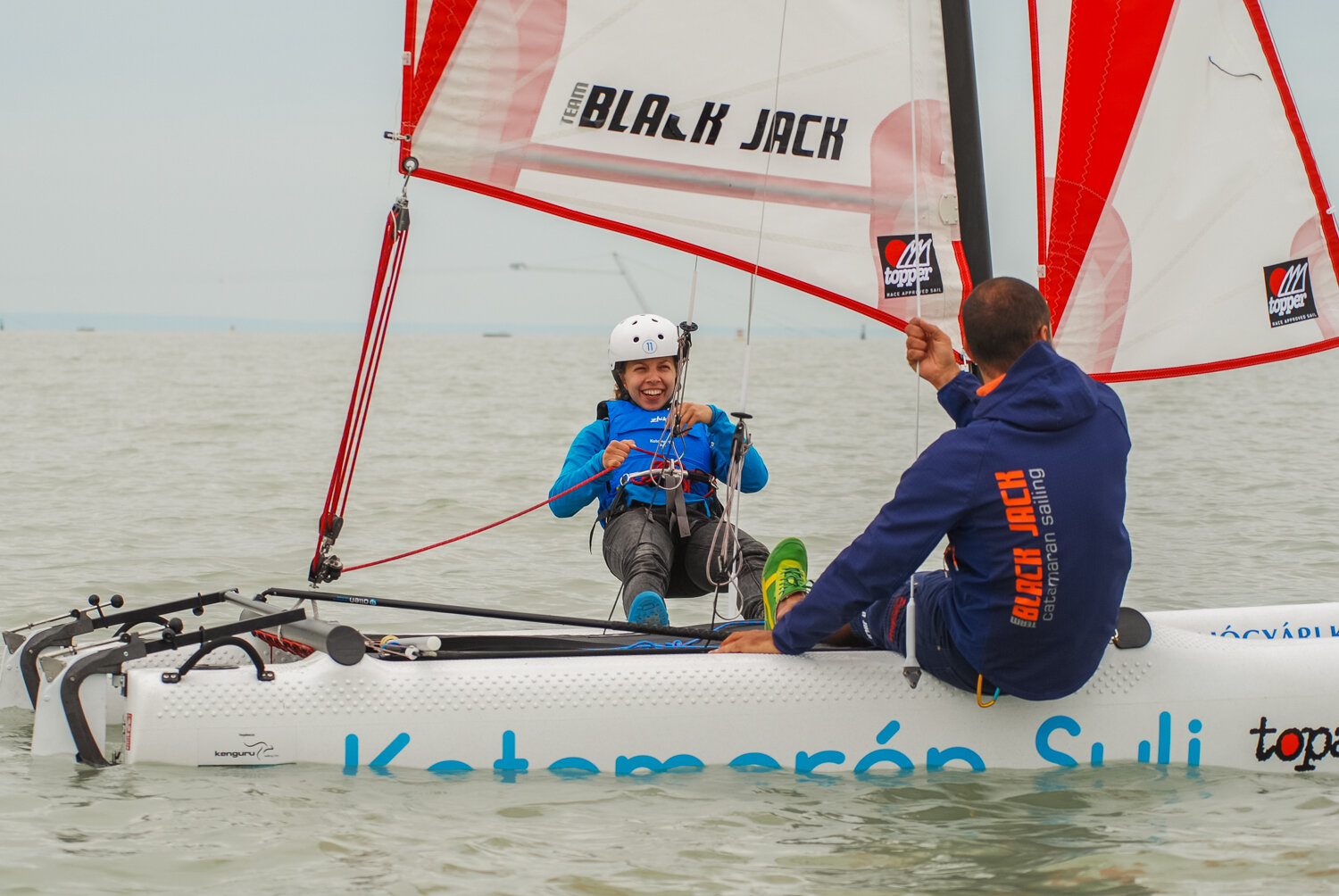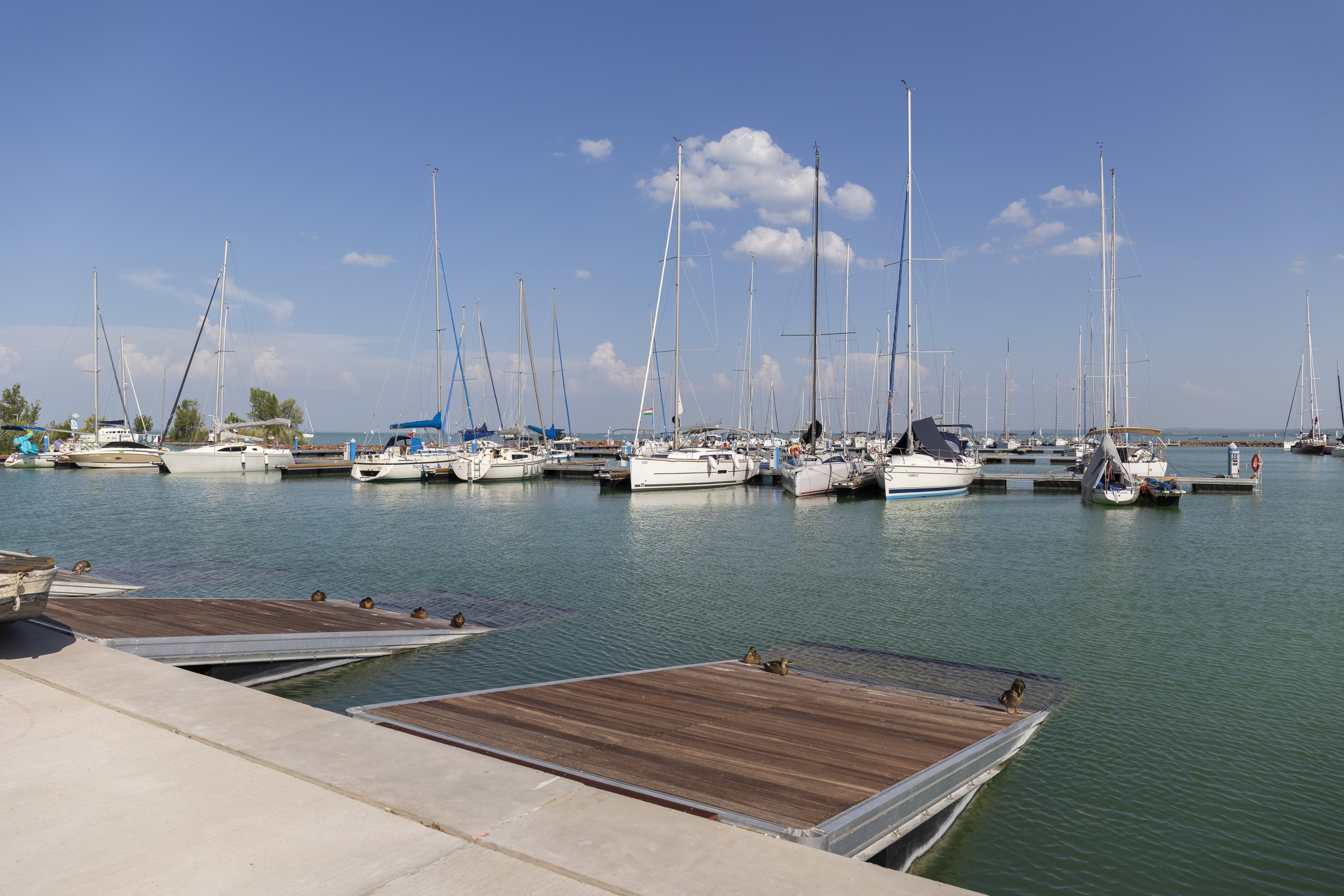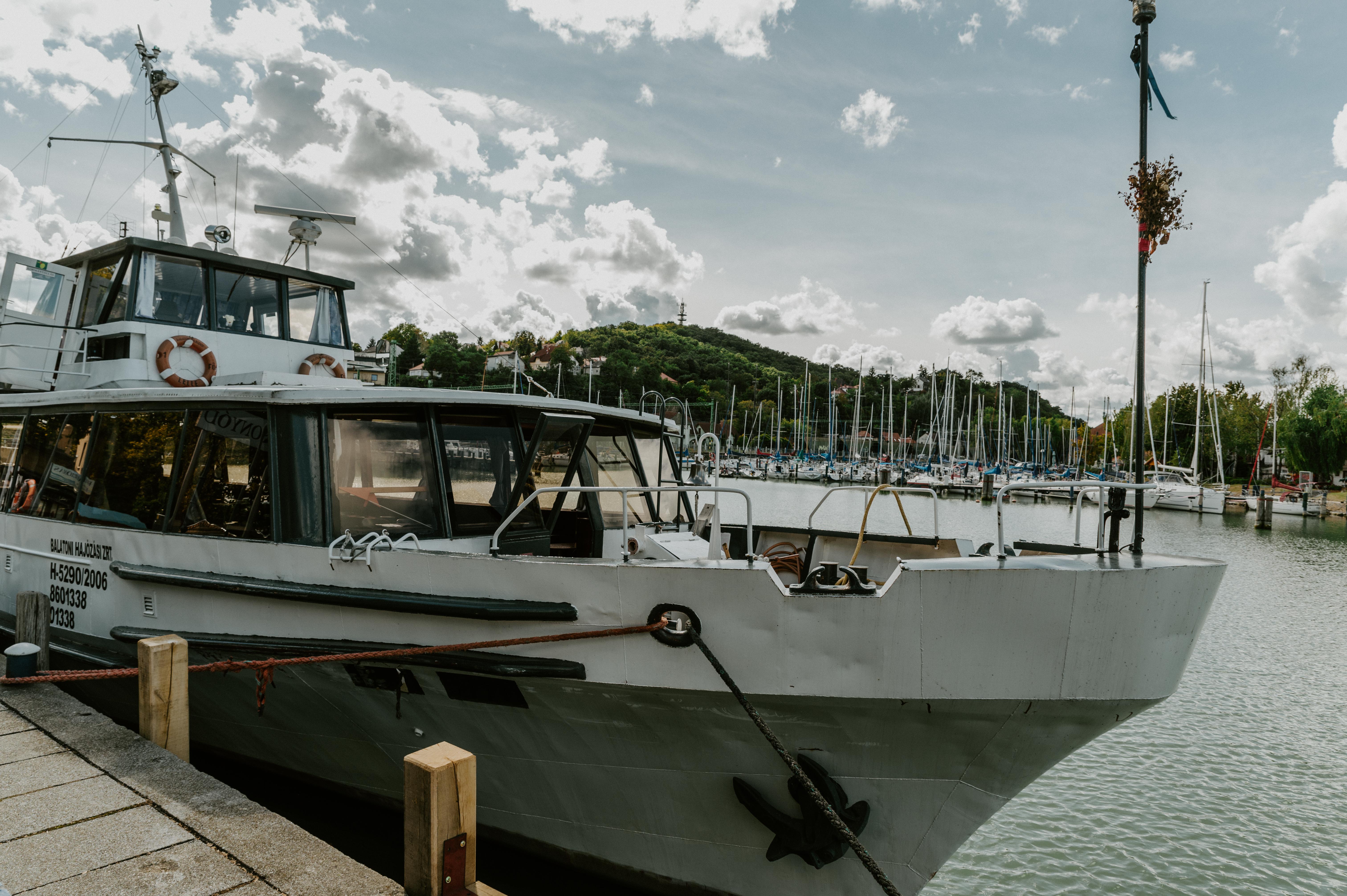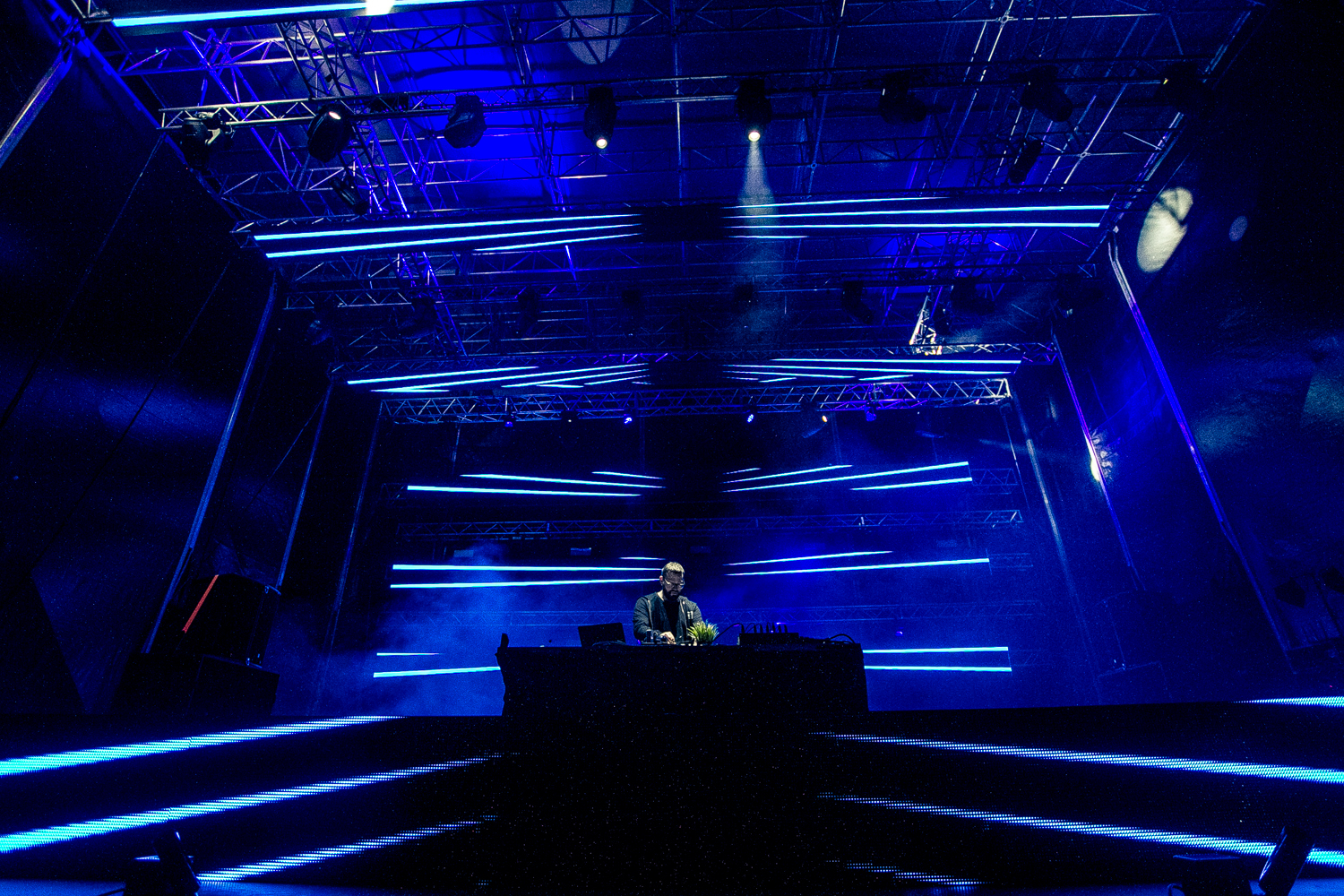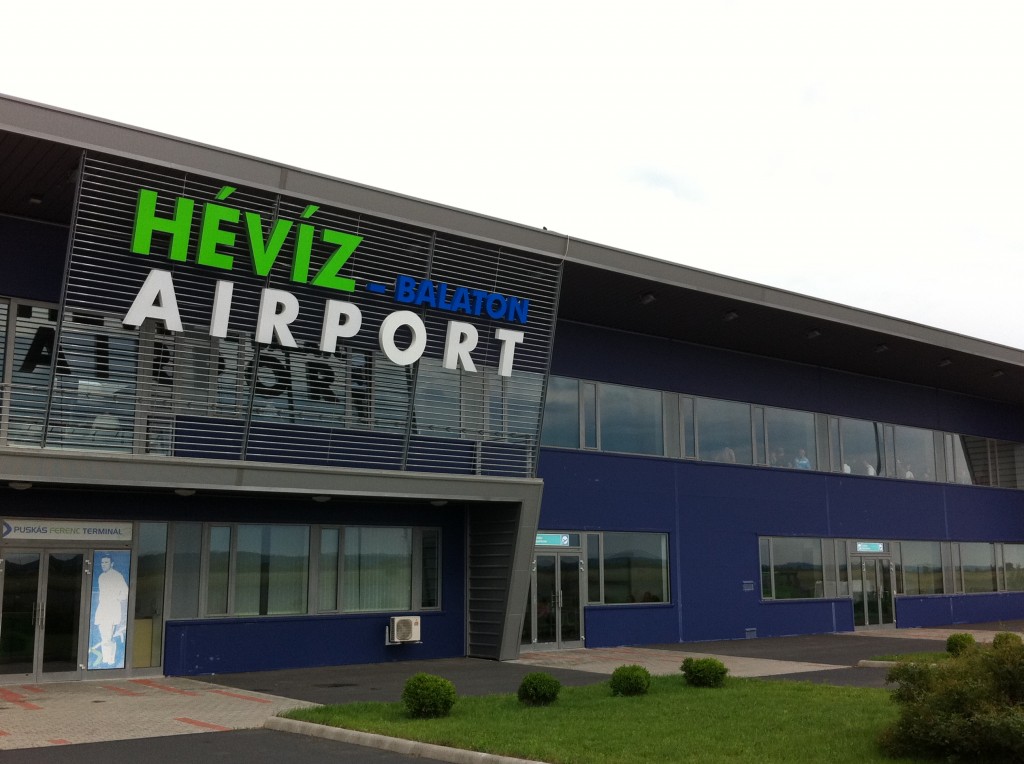After winning a tender published by the European Union, the German owner of the Hajógyári Marina will soon have 300 berths to rent out in Balatonfüred instead of 120, and a sailing centre is also being constructed with a conference hall, a playroom for kids, a shop for sailing accessories, and – what sounds even better than that – a museum showcasing the history of shipbuilding in Füred.
Füred has been a venue for building sailing boats since 1881, and Balaton ships are still produced in the local shipyard to this day. A couple of interesting facts: 30 years ago Nándor Fa and József Gál used the body of a Balaton-31 to construct the ship they set out on to circumnavigate the globe, and Nemere II, the ship that once held the record of the Blue Ribbon Regatta for 50 years, was also assembled here.
Totally unrelated to the Balaton ships: the new berths of the marina will be able to accommodate 40-50-foot ships, and a few of the spots will be reserved exclusively for catamarans. A season pass will cost around 500,000-900,000 HUF. During our recent visit construction was still very much in progress. The new facilities will debut after this year’s Blue Ribbon Regatta, as the most famous competition around Balaton is currently keeping sailors occupied all over the country.
Summer school with a twist
One of the features will be unveiled before the big race. The first to do so in Hungary, the Hajógyári Marina will launch a catamaran school this year, but not with the help of enthusiastic amateurs: the members of Team Black Jack, the medal-winning team of last year’s Blue Ribbon, will be the instructors to educate sailing novices, for example at the first camp, taking place between 22 and 26 June.
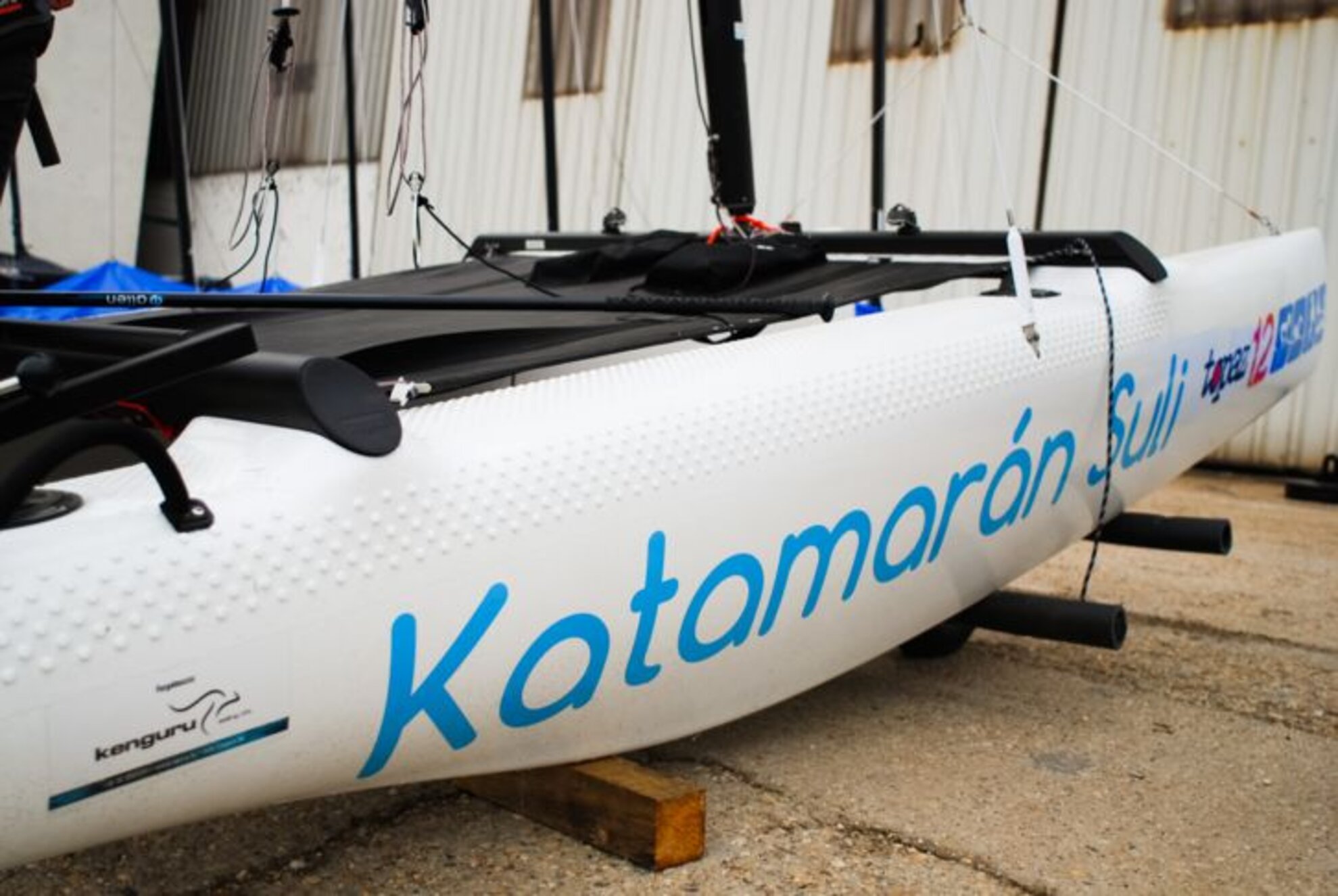
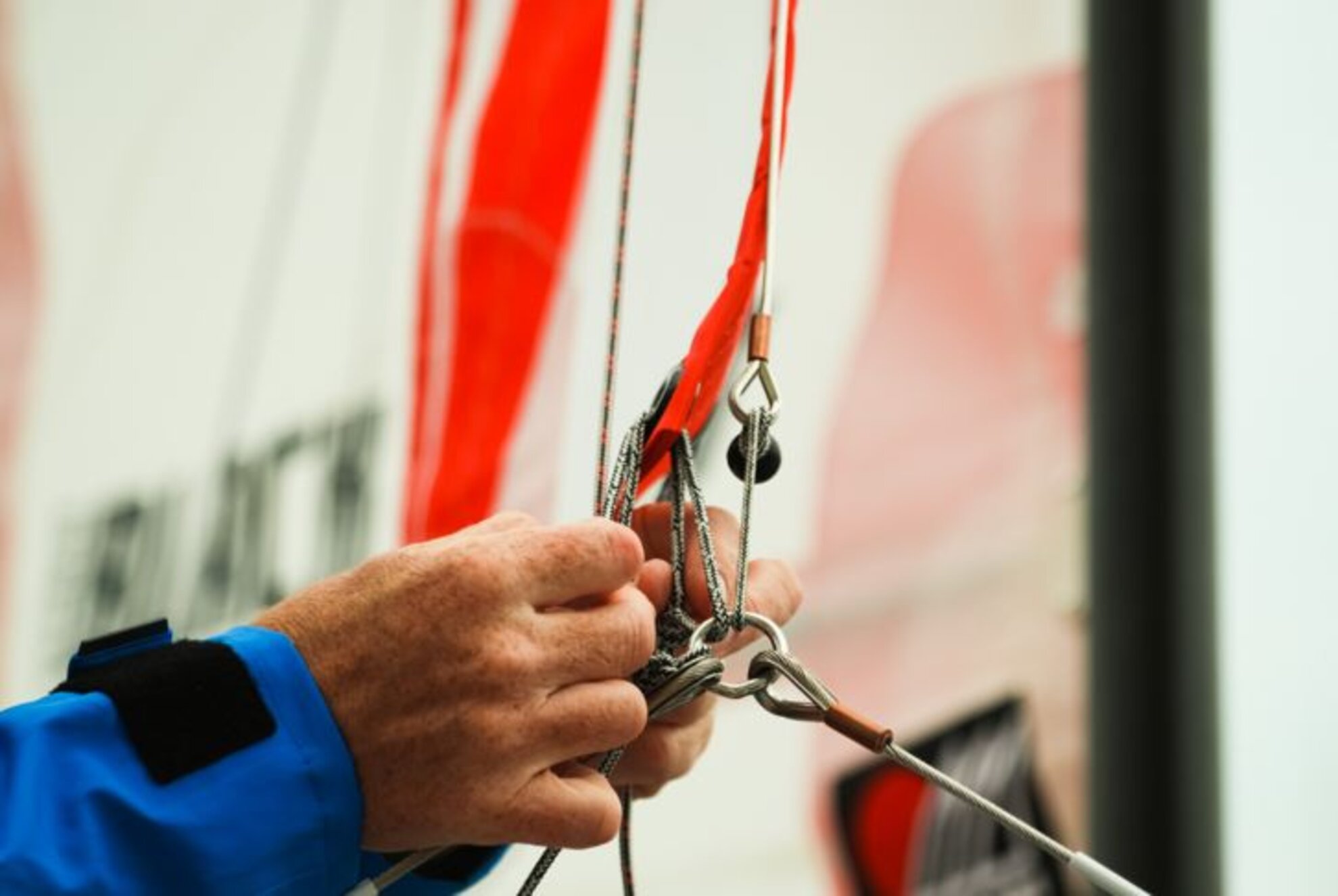
“I think it’s unique in the whole of Europe that a top local team is willing to work not only with young athletes, but also with kids that are completely new to the world of catamarans,” says Black Jack skipper Attila Nagy “Rozsda” as we sit down to chat with him.
He tells us that a total of six sailing camps will take place over the summer with about 12 kids participating in each of the one-week events. The camps will run from Monday to Friday, but the last day will be all about demonstrating to the parents what the little ones have learned during the week.
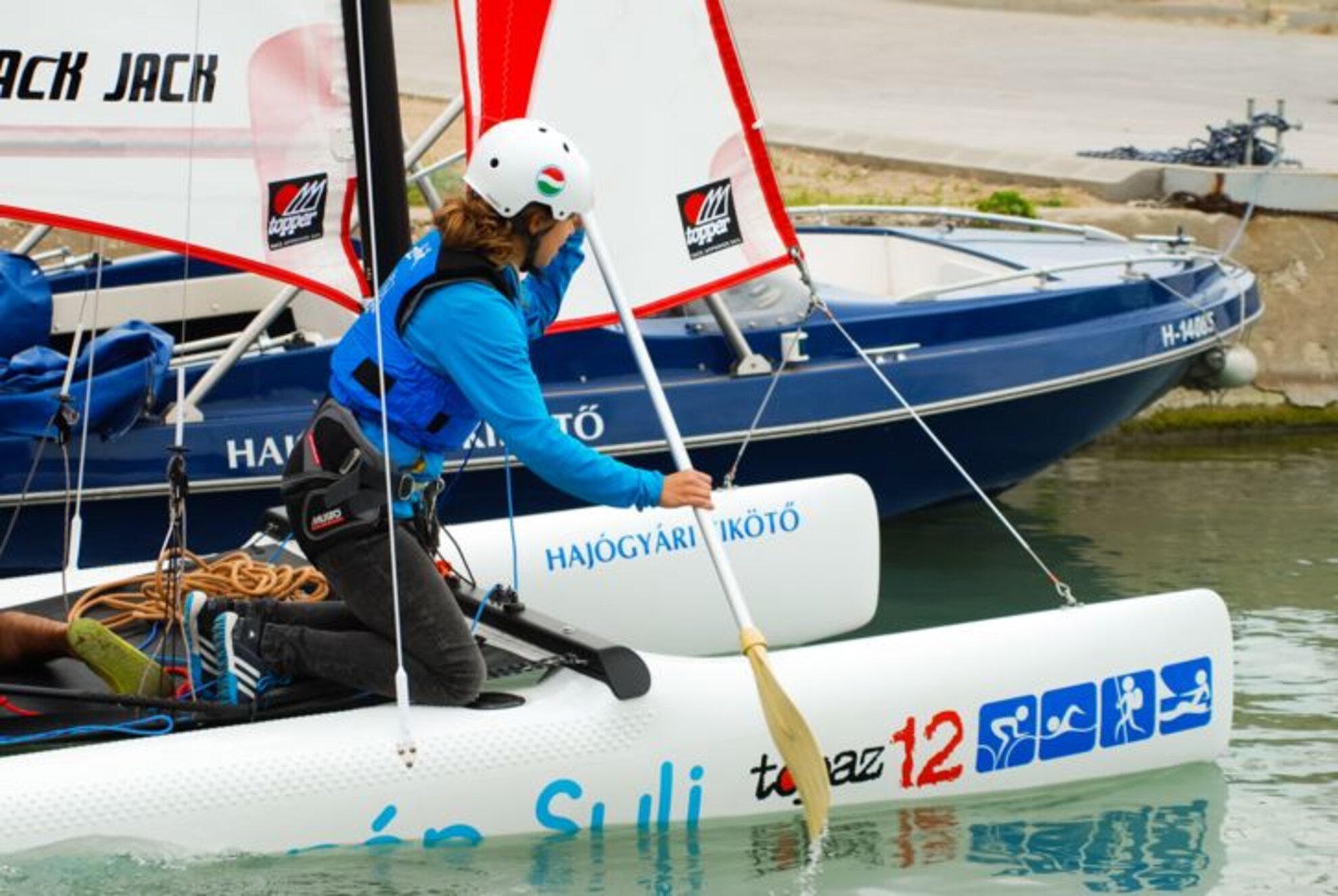
Multitasking on water
According to Attila, today’s kids will find catamaran training more fun than oldschool sailing courses because multitasking is one of the key elements: “My kids are already on Skype on their way to school, and they are also checking emails and Facebook simultaneously, so it’s very hard to capture their attention. That’s why they thought the old kind of training for children was boring. With the catamaran, however, you have to focus on a lot of things at the same time,” says Attila, and suddenly we find ourselves helping unwrap one of the small catamarans and watching two members of Team Black Jack quickly demonstrate the ins and outs of steering the vehicle.
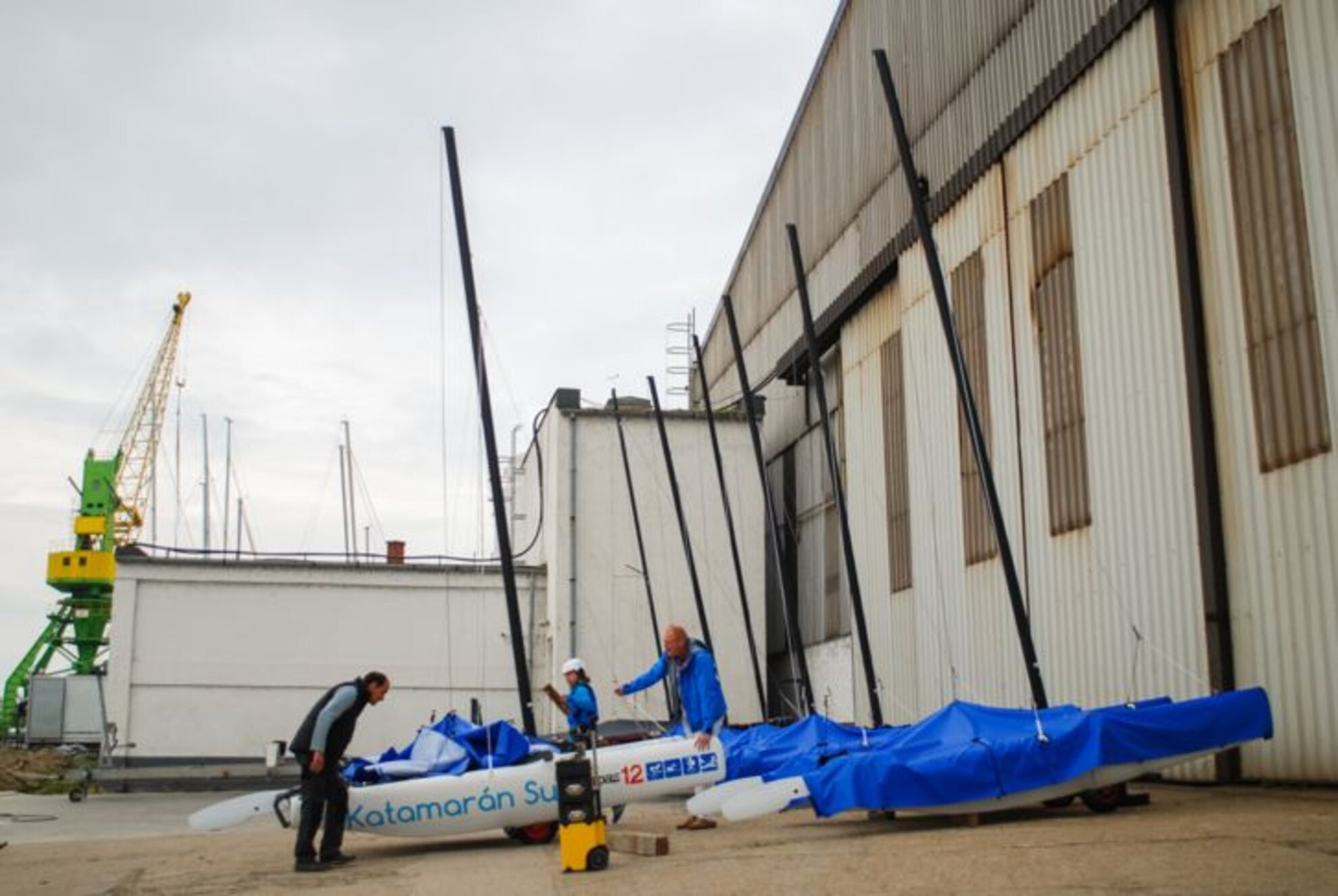
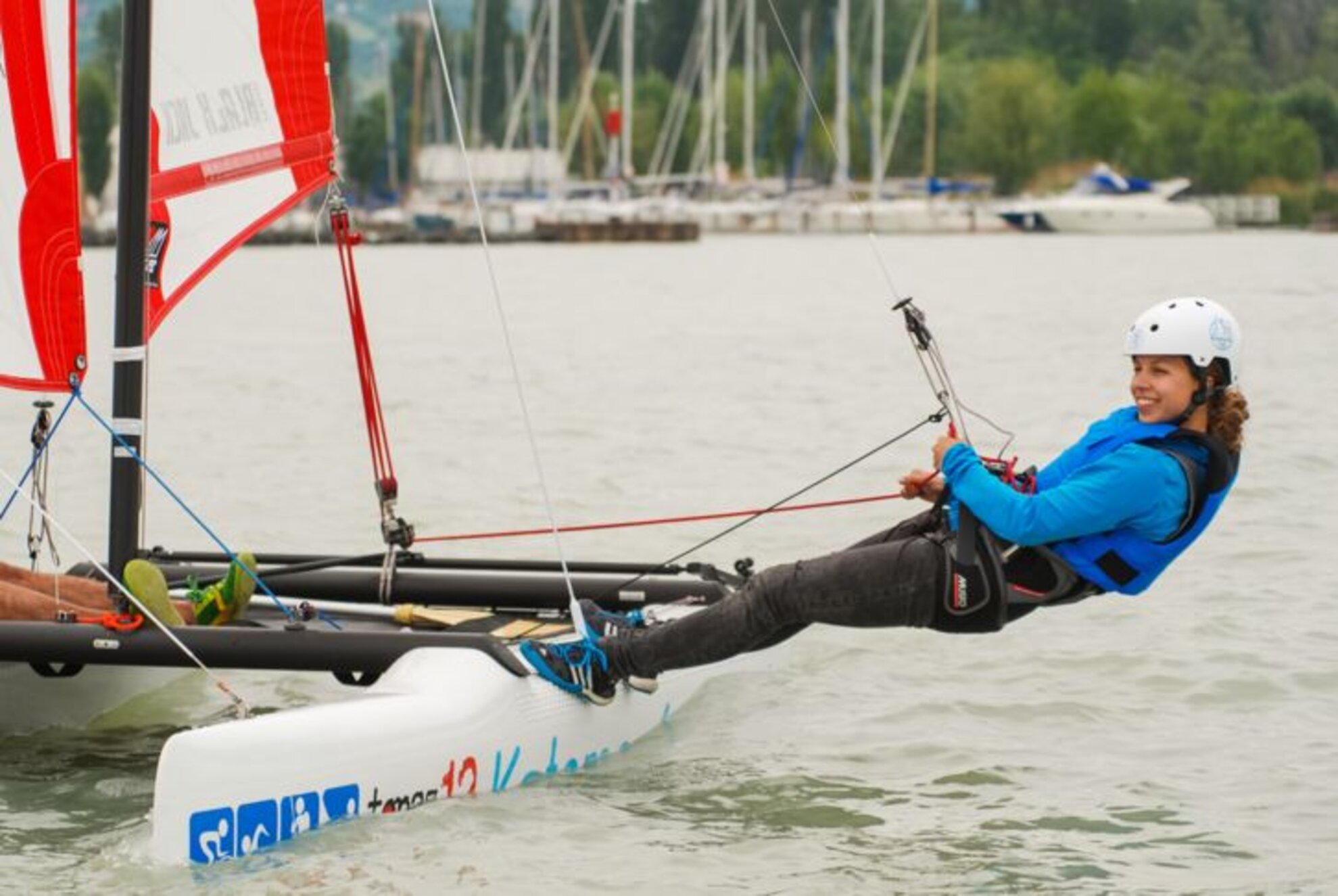
When all the prepping is done, you can see that these catamarans are clearly no match for normal-sized multihull ships – they are half the size of the Black Jack “mother ship”. Attila says that the Topaz-12 model used at the school can support 120 kg at most, so no more than three trainee sailors can be on board at any given time. Six catamarans have been brought from the Netherlands to be used at the camp, and an additional four will be acquired over the autumn period.
All other pieces of equipment are brand new. Attila and co. will provide the following for the kids who sign up:
- life jacket
- trapeze harness
- helmet
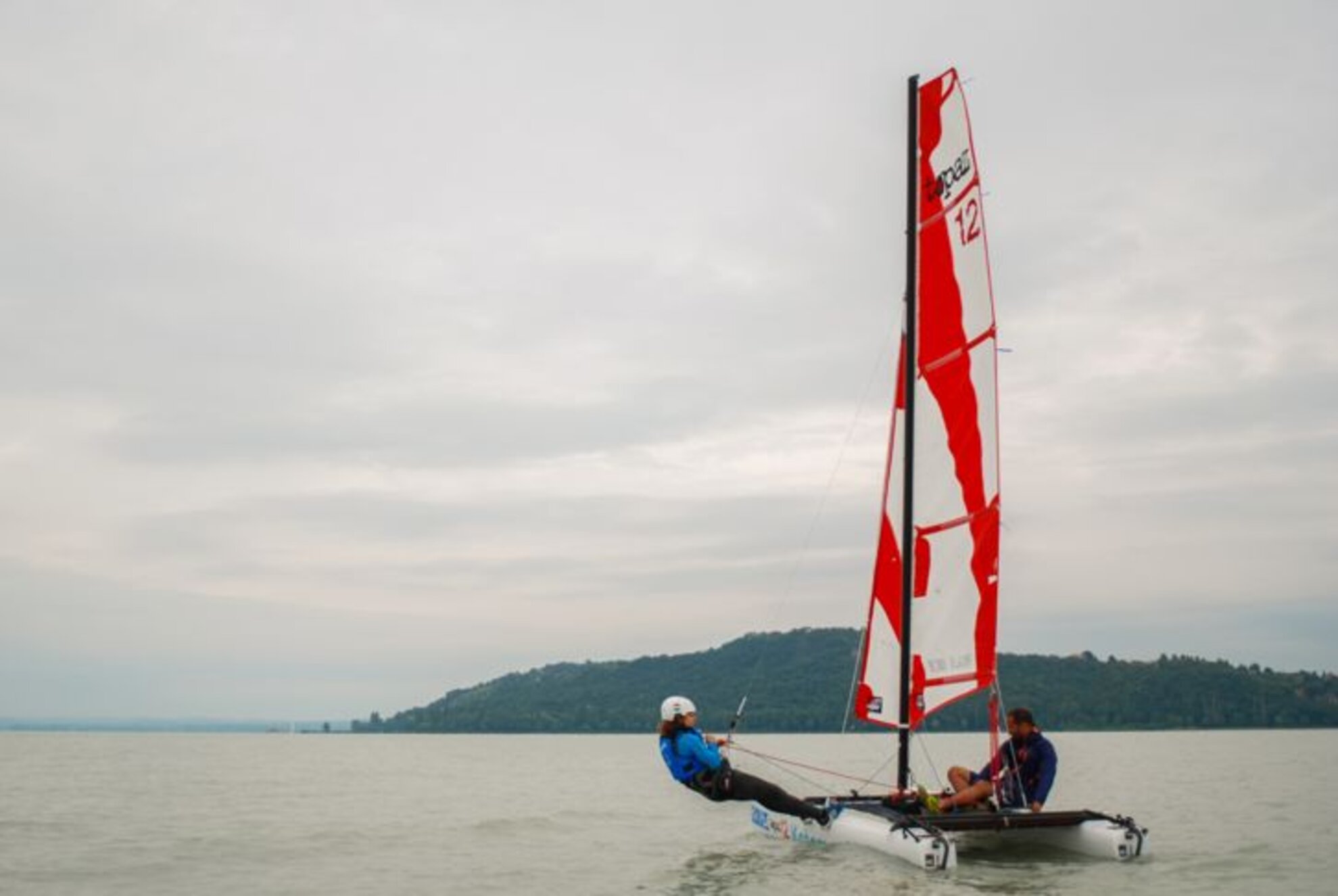
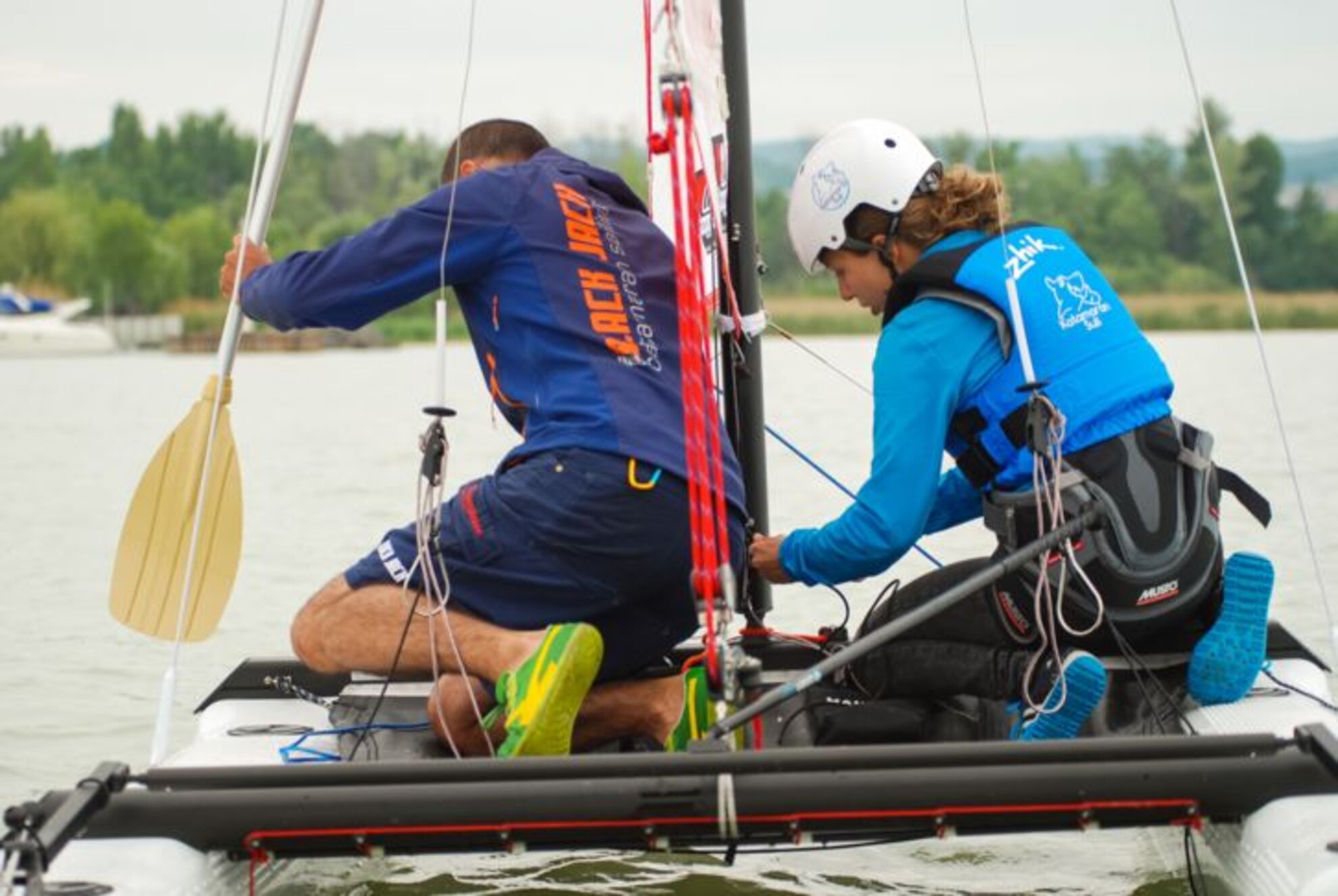
Previous experience in sailing is not a prerequisite, but knowing how to swim is a must. “The first task in the camp is swimming 50 m between two buoys. Anyone who’s not capable of completing the task will unfortunately not feel safe on the catamaran.” And that is very important because falling into the water can be a common occurrence in this genre. When we ask Attila what happens if the kids fall in, he only says: “If they don’t fall in on their own, we have to push them.” The reason is pedagogical: they need to be aware of their boundaries, so that they know how far they can go when they are out there. They also have to learn that it's not the end of the world if they end up in the water with their catamarans. At the kind of speed the kids will be travelling, nothing bad can happen if they have all the necessary safety gear on.
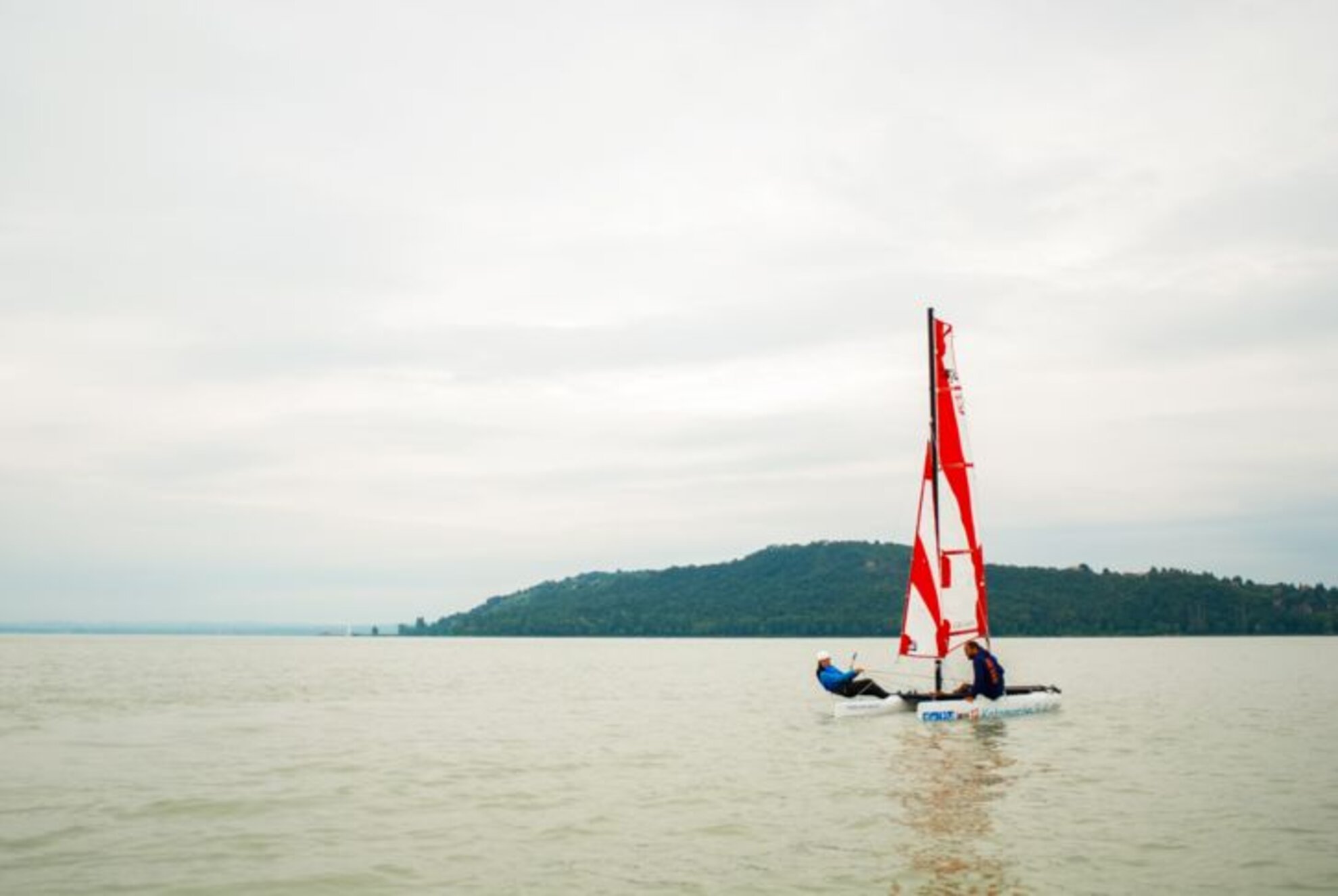
Füred–Siófok in 18 minutes? No problem!
